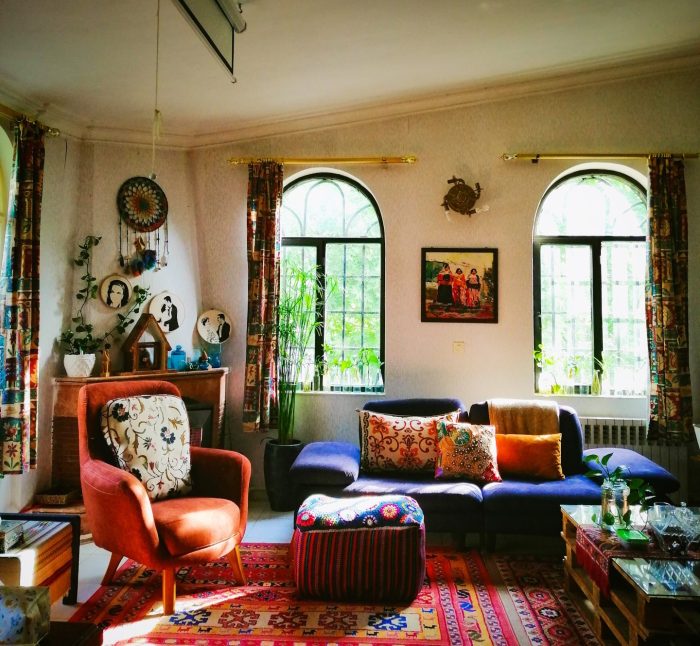Mixing patterns in interior design is an art form that transforms spaces into captivating visual masterpieces. From blending prints and textures to harmonizing colors, this guide will empower you to embrace the principles of pattern mixing and create stunning interiors that reflect your unique style.
Pattern Combinations
Incorporating multiple patterns into interior design can create a dynamic and visually appealing space. Mixing patterns involves combining prints, textures, and colors to achieve a cohesive and balanced look.
The key principles of pattern mixing include:
- Scale: Use patterns of varying sizes to create visual interest and avoid monotony.
- Contrast: Pair patterns with contrasting colors or textures to highlight differences and create a dynamic effect.
- Repetition: Repeat a particular pattern throughout the room to unify the space and create a sense of rhythm.
To successfully mix patterns without creating chaos, consider the following tips:
- Start with a neutral base and add patterns gradually.
- Use a color palette with a limited number of shades to maintain a cohesive look.
- Experiment with different pattern combinations before committing to a final design.
Examples of Pattern Mixing
Incorporating multiple patterns into an interior design scheme can create a visually captivating and dynamic space. Here are some inspiring examples of how patterns can be mixed effectively:
In a living room, a bold geometric rug with a mix of triangles and stripes provides a striking foundation. This pattern is complemented by a sofa upholstered in a floral fabric with soft, muted tones. The walls are painted in a neutral gray, allowing the patterns to take center stage.
Pattern Combinations
When mixing patterns, it’s important to consider the scale, color, and style of each pattern. In the living room example, the geometric rug has a large-scale pattern, while the floral fabric on the sofa has a smaller-scale pattern. This creates a sense of balance and prevents the space from feeling cluttered.
Another example of effective pattern mixing can be seen in a bedroom. A wallpaper with a delicate floral print creates a serene and inviting atmosphere. The bed is dressed in a duvet cover with a geometric pattern in a complementary color scheme. A throw pillow with a bold abstract print adds a touch of visual interest and ties the different patterns together.
Mixing patterns in interior design can be a great way to add visual interest and personality to a space. However, it’s important to do so in a way that feels cohesive and intentional. If you’re struggling with grief or loss, you may find that reading about Tips to Cope with Grief and Loss can help you process your emotions and move forward.
Similarly, when mixing patterns in interior design, it’s important to create a balance between different elements to achieve a harmonious and visually appealing result.
In a dining room, a table runner with a traditional paisley pattern adds a touch of elegance. The chairs are upholstered in a solid-colored fabric, allowing the runner to stand out as the focal point. The walls are painted in a soft blue, creating a harmonious backdrop for the mix of patterns.
These examples demonstrate how patterns can be mixed to create a cohesive and visually appealing interior design scheme. By carefully considering the scale, color, and style of each pattern, you can create a space that is both stylish and inviting.
Bold and Eclectic Patterns
Bold and eclectic patterns are a great way to add personality and style to any space. When used correctly, they can create a visually stunning and inviting environment. However, it is important to use these patterns sparingly, as too much of them can be overwhelming.
One of the best ways to incorporate bold and eclectic patterns into a space is to use them as accents. For example, you could use a brightly patterned rug to add a pop of color to a neutral room, or you could use patterned curtains to add a touch of drama to a window. You can also use bold patterns on furniture, such as a patterned sofa or armchair. This is a great way to make a statement in a room.
Vibrant Colors
When using bold and eclectic patterns, it is important to choose colors that will complement each other. You can use a variety of colors, but it is important to make sure that they work well together. For example, you could use a bright blue and yellow pattern, or a more muted green and gray pattern. It is also important to consider the overall color scheme of the room when choosing colors for your patterns.
Geometric Shapes
Geometric shapes are a great way to add interest to a space. You can use geometric shapes in a variety of ways, such as on rugs, curtains, or furniture. Geometric shapes can also be used to create a focal point in a room. For example, you could use a large geometric rug to define a seating area.
Mixing patterns in interior design can create a visually dynamic space, but it’s important to ensure harmony. Just as getting a good night’s sleep is essential for our mental health ( Ways to Improve Sleep Quality for Mental Health ), so is creating a balanced and restful home environment.
By incorporating patterns in a thoughtful way, we can achieve a sense of both style and serenity.
Unconventional Patterns
Unconventional patterns are a great way to add a touch of personality to a space. Unconventional patterns can include anything from animal prints to abstract designs. When using unconventional patterns, it is important to make sure that they do not clash with the other patterns in the room. You can also use unconventional patterns to create a unique and memorable space.
Pattern Mixing in Different Styles
Pattern mixing is a versatile technique that can be incorporated into various interior design styles. Whether you prefer bohemian, traditional, or modern aesthetics, there are specific patterns and color palettes that complement each style.
Bohemian Style
Bohemian style embraces eclecticism and global influences. Mixing patterns in this style involves layering bold colors, ethnic prints, and intricate textures. Consider incorporating patterns such as paisley, ikat, and Aztec motifs.
Traditional Style
Traditional style emphasizes symmetry, balance, and classic patterns. Mixing patterns in this style focuses on using timeless patterns like stripes, florals, and damask. Choose patterns in muted colors or neutral tones to create a sophisticated and elegant look.
Modern Style
Modern style favors clean lines, geometric shapes, and bold accents. Mixing patterns in this style involves using contrasting colors and patterns to create a dynamic and visually striking space. Consider mixing graphic prints, stripes, and solids in unexpected ways.
Current Trends in Pattern Mixing

Pattern mixing remains a dynamic field in interior design, constantly evolving with emerging trends. Here are the latest patterns, color combinations, and textures that are shaping contemporary spaces:
Bold and Geometric Patterns
Geometric patterns, such as stripes, checks, and hexagons, are making a strong comeback. These bold and graphic designs add a modern and sophisticated touch to any room. Consider incorporating them into statement walls, upholstery, or curtains.
Organic and Natural Motifs
Patterns inspired by nature, such as florals, leaves, and animal prints, are also trending. These organic motifs bring a sense of tranquility and warmth to spaces. They can be used to create a bohemian or eclectic look.
Mix and Match Colors
Mixing and matching colors is another key trend in pattern mixing. Don’t be afraid to experiment with unexpected combinations, such as warm and cool tones or complementary colors. The result can be a vibrant and visually stimulating space.
Layering Textures, Mixing patterns in interior design
Adding different textures to your patterns creates depth and interest. Combine smooth fabrics with rough textures, or mix matte and shiny surfaces. This layering effect adds a tactile element to the space.
Incorporating Different Scales
Playing with different scales of patterns can create a dynamic and visually engaging space. Pair large-scale patterns with smaller ones to add contrast and depth. This technique can be used to create a focal point or to draw attention to certain areas of the room.
Summary

Mixing patterns is not merely about adding visual interest; it’s about orchestrating a symphony of textures, colors, and scales to create a cohesive and expressive space. Embrace the art of pattern mixing, and unleash your creativity to design interiors that are both aesthetically pleasing and deeply personal.
Top FAQs: Mixing Patterns In Interior Design
Can I mix patterns with different scales?
Absolutely! Varying scales create visual interest and depth. Combine large-scale prints with smaller patterns to balance the look.
What are some popular pattern combinations?
Floral and geometric, stripes and polka dots, animal prints and solids—the possibilities are endless. Experiment with different combinations to find what resonates with your taste.
How do I avoid creating a chaotic look when mixing patterns?
Start with a neutral base and gradually introduce patterns. Use a limited color palette and pay attention to the scale and repetition of patterns to create a cohesive flow.

